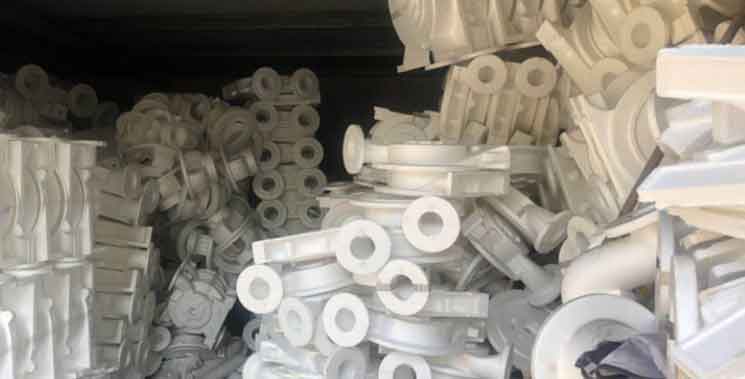Lost foam casting, like any casting process, can encounter various defects that may affect the quality and integrity of the final product. Here are some common defects in lost foam casting along with their causes and possible solutions:

- Incomplete Fill or Misrun:
- Cause: Insufficient pouring time, inadequate gating system, or blockage in vents.
- Solution: Optimize pouring time, improve gating design for proper metal flow, ensure clear and open vents, and use appropriate pouring techniques to achieve complete fill.
- Gas Porosity:
- Cause: Entrapped gases from foam decomposition, improper venting, or excessive moisture in the mold.
- Solution: Use high-quality foam patterns with low decomposition rates, ensure proper venting and mold permeability, and control moisture content in the mold.
- Shrinkage Porosity:
- Cause: Insufficient feeding, inadequate riser design, or inadequate metal volume in critical areas.
- Solution: Increase riser size and number, optimize gating design for better feeding, adjust pouring parameters to ensure adequate metal supply, and use feeding aids if necessary.
- Surface Defects (Veining, Pinholes):
- Cause: Inadequate mold coating, improper mold release agents, or excessive mold temperature.
- Solution: Apply high-quality mold coatings, use appropriate release agents, control mold temperature, and optimize coating thickness for better surface finish.
- Dimensional Inaccuracies:
- Cause: Pattern or mold distortion, thermal expansion/contraction, or improper cooling.
- Solution: Ensure proper pattern construction and stability, control mold temperature, implement effective cooling techniques, and consider post-casting machining for dimensional accuracy.
- Metal Penetration:
- Cause: Insufficient coating, excessive pouring temperature, or improper gating.
- Solution: Apply high-quality coatings, control pouring temperature, improve gating system to regulate metal flow, and use barrier coatings if needed to prevent metal penetration.
- Cracks and Hot Tears:
- Cause: High thermal stress, inadequate mold rigidity, or improper cooling.
- Solution: Optimize cooling rate, enhance mold rigidity, control solidification parameters, and consider the use of chill plates or cooling inserts.
To address these defects, it is crucial to implement proper process controls, including selecting suitable foam patterns, optimizing gating and venting systems, controlling pouring parameters, monitoring mold moisture, and conducting regular inspections and quality checks. Additionally, utilizing advanced simulation tools and conducting experimental trials can help in identifying and resolving specific defect issues in lost foam casting.
